China-Pak military nexus a matter of concern: Indian defence minister
China-Pak military nexus a matter of concern: Indian defence minister
November.29 (China Military News cited from indiatimes.com): India on Friday expressed grave concern at China’s continuing help to Pakistan to build its military capabilities, which for long has even covertly stretched to the missile and nuclear weapons arenas.
“The increasing nexus between China and Pakistan in the military sphere remains an area of concern,” said defence minister A K Antony, speaking at the 44th foundation day anniversary of the Institute for Defence Studies and Analyses here.

JF-17 `Thunder’ fighter jet
This comes just a few days after the first JF-17 `Thunder’ fighter jet, primarily designed and developed by China, rolled out of the Pakistan Aeronautical Complex at Kamra. Pakistan is going to induct well over 100 of these light-weight multi-role fighters.
China is virtually Pakistan’s largest supplier of military hardware and software but what is more worrying for India is the close cooperation between the two in the strategic weapons area.
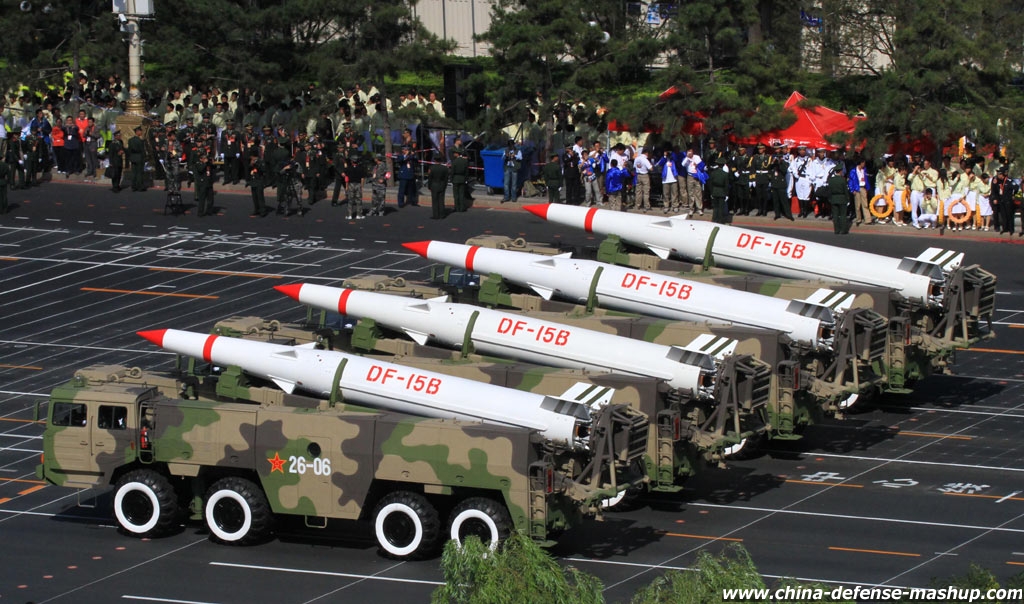
Chinese DF-15B Ballistic Missiles
Pakistan’s Shaheen series of solid-propellant ballistic missiles, for instance, is derived from the Chinese M-9, M-11 and M-18 missiles. Similarly, its Babur land-attack cruise missile has clearly been developed with China’s assistance.
Beijing, of course, has also helped Islamabad in its military nuclear programme, which is now geared towards supplementing Pakistan’s ongoing enriched uranium-based nuke programme with a weapons-grade plutonium one.
China, itself, remains a big source of worry. India is keeping a close-watch on the rapid modernisation of the 2.5-million strong People’s Liberation Army and its expanding strategic transborder and `area-denial’ military capabilities, with straight double-digit hikes in its military budget for the last 20 years.
“We have to carry out continuous appraisals of Chinese military capabilities and shape our responses accordingly. At the same time, we need to be vigilant at all times,” said Antony. At the same time, the minister expressed hope that China will `reciprocate the initiatives aimed at mutual trust-building and understanding’.
Incidentally, while pointing out China’s continuing military assistance to Pakistan, the latest defence ministry report holds, “The possibility of enhancing connectivity with Pakistan through the territory of Jammu and Kashmir, illegally occupied by China and Pakistan, and with other countries, will also have direct military implications for India.”
Competing militarily with China is, of course, just not possible for India. China has a huge missile arsenal, with both ICBMs (inter-continental ballistic missiles) and SLBMs (submarine-launched ballistic missiles), as well as 75 major warships and 62 submarines, 10 of them nuclear-powered ones.
Malaysia Seeks China’s Logistic Support For Su-30 Fighters
Posted on 10 November 2009
November.10 (China Military News cited from BERNAMA and written by Vincent Low) — Malaysia is strengthening its military air ties with China and has sought the assistance of the People’s Liberation Army (PLA) in maintenance and logistics support for Malaysia’s fleet of Sukhoi SU-30 fighter jets.
Royal Malaysian Air Force (RMAF) chief Jeneral Datuk Seri Rodzali Daud said Malaysia was also looking into acquiring some Chinese military ware.
“China had risen to become the superpower of the region and is advanced in its technology as well and our relationship with China is getting better and better,” Jen Rodzali told Bernama Friday.
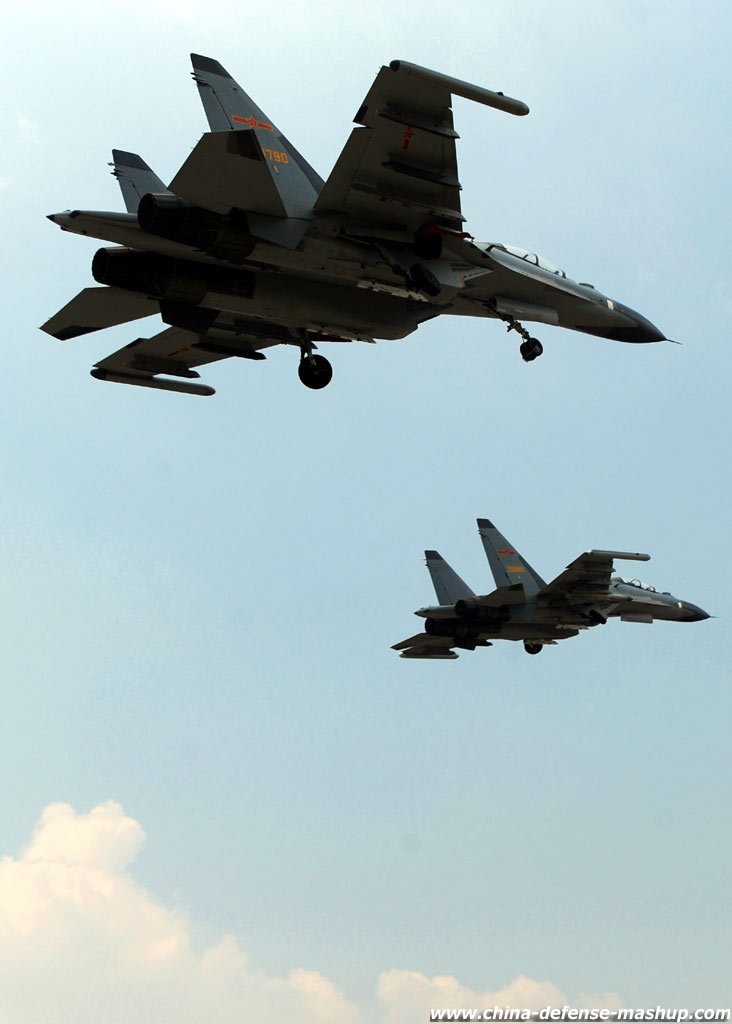
PLA Air Force Su-30 MKK fighters
“They can help us in many areas, like for parts and maintenance of the SU-30. In fact, Malaysia is also looking into some of the Chinese military products.”
The RMAF has 18 Russian made SU-30 fighter jets while China also has large numbers of Russian made fighter jets including the Sukhoi SU-30.
Jen Rodzali was among the air force chiefs from 34 countries invited for a two-day international forum starting today in conjunction with the PLA Air Force (PLAF) 60th anniversary.
He met his Chinese counterpart, General Xu Qiliang, at the PLAF headquarters on Thursday night.
Jen Rodzali said the RMAF would strengthen cooperation with the PLAF and in the past had participated in the exchange of personnel and regional security information.
At least six Malaysian military personnel were attached to China’s Defence University and Staff College and China has agreed to send its first student to the Malaysia Defence College next year.
The RMAF delegation will attend a PLAF Air Show and Air Force equipment exhibition at Shahe Airfield near here on Saturday before visiting the PLAF Museum on Sunday.
The group will also visit Jining Airfield in eastern Shandong province on Monday to witness an exhibition of China-made fighter jets before returning to Kuala Lumpur.
AVIC: China’s largest home-made 200-tonne class air Lifter to emerge in December
Posted on 05 November 2009
November.05 (China Military News Reporting by Johnathan Weng) — Despite of the IL-76MD, China will demonstrate its indigenous 200-tonne class heavy military airlifter in the last month of 2009. This transporter is also the largest aircraft which China has ever made. Mr. Hu Xiaofeng, the General President of AVIC, unleashes this information on one media news press today.
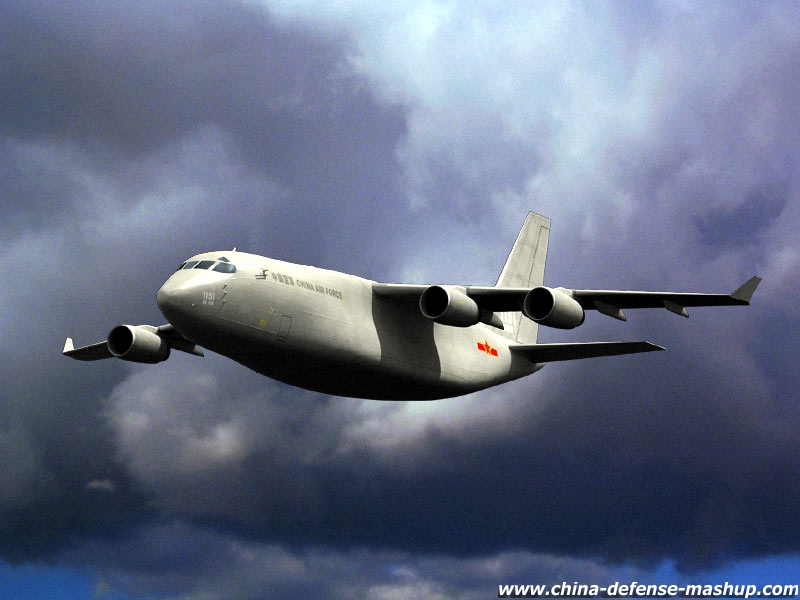
CG imagination image of China Military Transporter
Hu Xiaofeng says that the new military transporter will emerge as prototype aircraft, which is independently developed and manufactured by XAC (Xi’an Aircraft Industry Group). He also promises that the 80-tonne class C919 jet liner is being under production and will be delivered to COMAC (Commercial Aircraft Corporation of China).
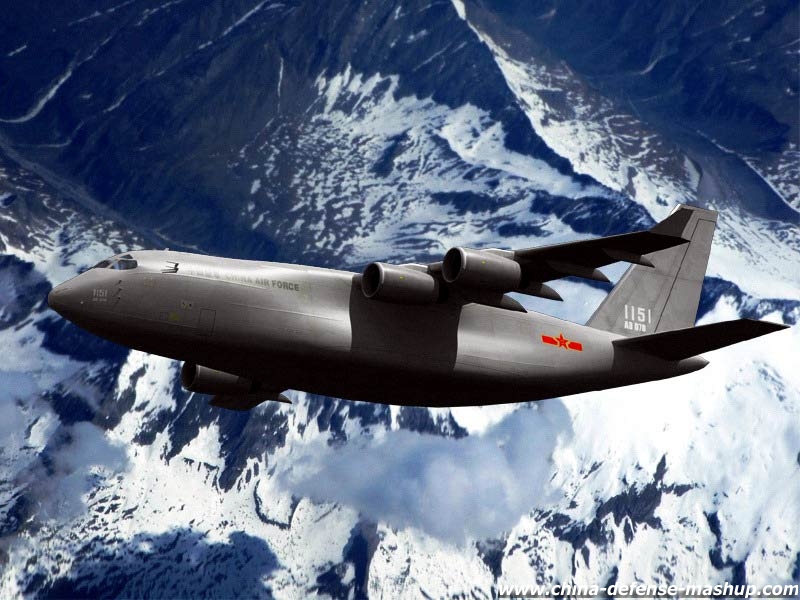
CG imagination image of China Military Transporter
China-Defense-Mashup has reported before that this military transport airfraft project was initiated before 3-4 years. Chinese Government has esteemed this project as “National Significant Project”. The Military department believes that the R&D on heavy airlifter should be based on the mature and reliable technologies, but its performance can approach the international advanced transport aircraft with Chinese independent innovative technologies.
It can be summarized that China’s future Military Heavy airlifter Prototype will be designed on Russia’s IL-76MD. But China’s airlift aircraft will has an expanded size and payload capacity, improved electronic devices, and even some concepts absorbed from C-17. For the Engine, China will probably use D-30 engines and then replace them by WS-18 or advanced 4 high-Bypass ratio turbofan engines developed from FWS-10.
The detailed information has been unavailable. Here is the previous specifications estimation. Some numbers may be incorrect.
Crew: 3
Payload Capacity: 60,000-65000 kg
Length: 49 m
Wingspan: 50 m
Height: 15 m
Wing area: 310 m2
Empty weight: 100,000 kg
Max takeoff weight: 220,000 kg
Power: 4×turbofans
Maximum speed: 750-800 km/h
Range: (with max payload) 4,400 km
Service ceiling: 13,000 m
For years, Xi’an Aircraft Industry Group has been absorbing foreign aviation technologies and QC(Quality Control) & QA(Quality assurance) measurements by industrial subcontracting with Boeing and Airbus. Meanwhile, AVIC is preparing the correspondent attached technological projects. Such as CARDC (China Aerodynamics Research & Development Center) has achieved breakthrough in “Turbofan Engine low-speed Simulating Testing Technologies” for Airlifter high bypass engine. Besides, in 2008 China’s research on Polyacrylonitrile (PAN) based carbon fibers will reach its milestone to produce high-performance aviation materials. PLA’s future heavy airlifter will realize the shrunk aircraft empty weight by CF Compound Material made fuselage and wings.
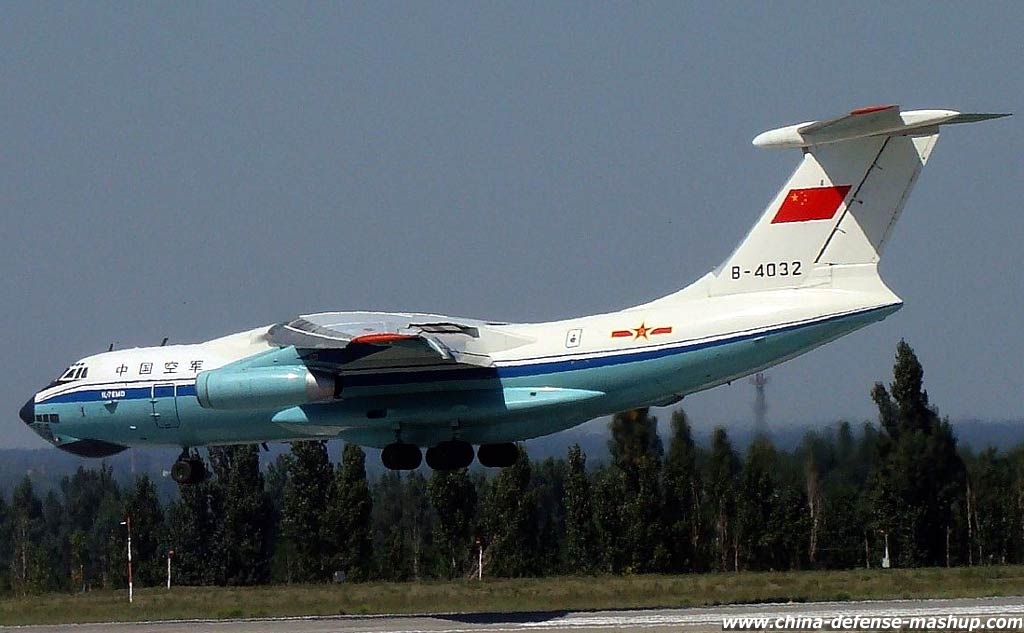
IL-76 of PLA Air Force
The strategic value of China’s heavy airlifter, is not only the great improvement PLA’s forces long distance projection, but also an air platform for China’s New concept Strategic Weapon System. A great conventional weapon gap between PLA and U.S. forces usually shrivels China leaders’ purpose of taking Taiwan back by forces. So Heads in China Government has been focusing on unconventional “Shashoujian” weapon system for strategic striking back.
On the media news press, Hu Xiaofeng also says that L-15 will participate this month’s Dubai Air show 2009. He tells that lots of foreign Air Force pilots have visited Aviation Industry Group for related test flight.
November.6 is the one year birthday of Re-grouped AVIC group.
Over 400 private enterprises become Military Contractors with PLA equipment R&D
Posted on 24 October 2009
October.24 (China Military News cited from chinamil) — Since the beginning of 21 century, there have been 400-plus high-tech civil enterprises in China which either have obtained the qualifications of the Chinese People’s Liberation Army (PLA) as its equipment manufacturers or have passed the preliminary examination of the PLA for joining in the equipment research and development, forming a fresh force for boosting the better and faster armaments development of the PLA.
Since the reform and opening up to the outside world, Chinese civil enterprises have become a new force in China’s industry with prominent advantages in technological innovation.
In view of improving the military equipment quality and production efficiency, when it entered the 21 century, the related departments of the PLA and the Chinese government have promulgated nearly 100 regulations and policies for the purpose of setting up a competitive equipment procurement system and giving green lights to civil enterprises to join in the ranks of equipment provider of the PLA.
For example, in October 2002, the Central Military Commission enacted the Regulations of the Chinese People’s Liberation Army on Equipment Procurement to adapt to the market economy. In 2003, the General Armaments Department (GAD) of the PLA issued the Regulations Governing the Qualification Examination of Equipment Producers, setting up the same “entrance threshold” both for the state-owned military industrial enterprises and civil enterprises.
The Regulations on the Permission and Management of Scientific Research and Production of Weapons and Equipment jointly promulgated by the State Council and the Central Military Commission in 2008 and the Opinions on Strengthening Competitive Procurement of Equipment promulgated by the PLA General Armaments Department in last July have provided policy support for civil enterprises to participate in the competition of commissioned manufacturers of weapons and equipment of the PLA.
Radar Expert unveils the development of Chinese KJ-2000 AWACS
Posted on 12 October 2009
October.10 (China Defense Mashup Reporting by Johnathan Weng) — Chinese Air Force KJ-2000 AWACS just played a main role in the air parade in PRC’s 60th Anniversary day. China government also announces that it become the 4th country which can design and manufacture Airborne Warning and Control System behind U.S., Russia and Israel.
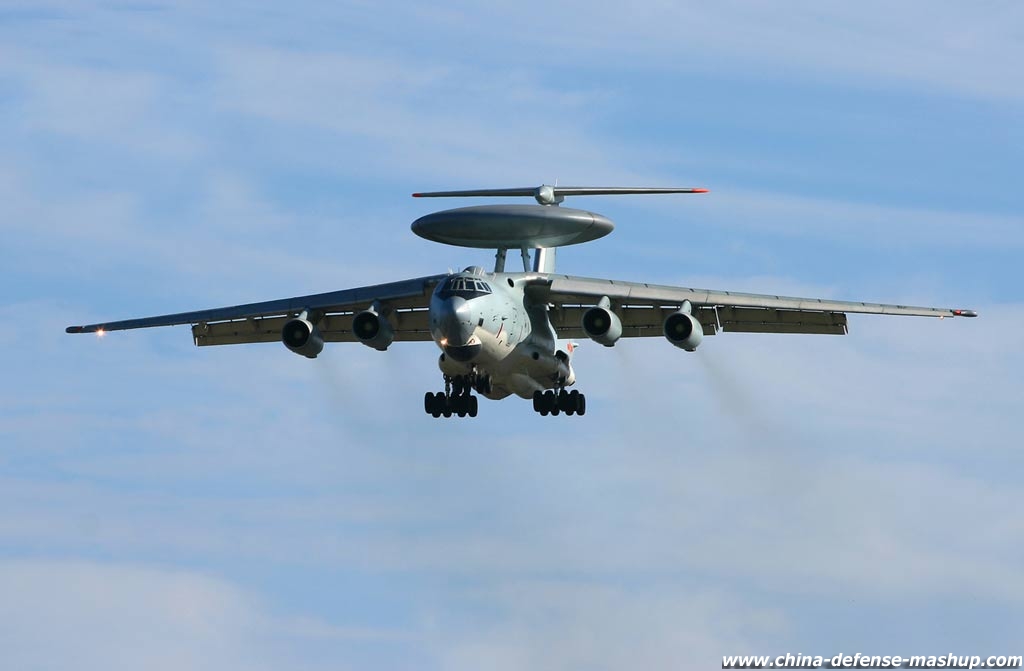
But before the October.1 2009, the development history of Chinese KJ-2000 AWACS is still uncover from the classified files. Fortunately, one Chinese state-run magazine newly published in this month makes an interview with one Chinese leading electronic expert to tell a story of KJ-2000.
Mr. Wang Xiaomo, the interviewee who has been engaging in the research and design of radar and made great contributions to the development of the Chinese military electronic industry. Here is the brief content of the interview.
Reporter: China began the KJ-1 (Air Warning-1) Project at the end of 1960s, why it was canceled. And when did China re-initiate the AWACS project later?
Wang: The KJ-1 Project was terminated because China could not solve the problem of Ground Clutter when airborne radar power-on. The failure of KJ-1 project tells that China must make technological breakthrough in “Ultra-Pure Spectrum Transmitter”, “High Performance Signal Processor” and “ultra-low sidelobe antenna” before develop AWACS. In 1970s, China has made great achievements in radar technologies and the boost of computer also brings a reality of producing high-performance digital processor.
Besides, several conflicts occurred since 1980s have display the supreme position of early warning aircraft. Under the background of international situation, China decided to develop or acquire AWACS since early 1990s.
Reporter: It must be an unusual and hard road.
Wang: Yes. Although preparations has been made for years, whether China has the ability to develop early warning aircraft is still argued in academic circle. In 1992, several Chinese Scientists and engineers provide a report to government for explaining China’s ability and determination in early warning aircraft development. The government at that time also organized one oversea visiting delegation (I am one member of it) to three countries: U.K., Russia and Israel.

The delegation later brought one sum-up: purchase from other countries for realizing operational ability as soon as possible. The delegation at that time believed that Israel early warning aircraft had excellent performance but was immature for advanced ARRAY radar technology. Meanwhile the Russia’s can not satisfy our demands. The delegation wanted to purchase UK’s “Nimrod”, but this project was canceled later.
Finally China determined to develop airborne early warning system by domestic power and simultaneously import related technologies from Israel.
In 1992, China and Israel made a primitive agreement to co-develop an airborne Early Warning system for PLA Air Force. After 4 years, both sides signed a official contract, which defined a cooperative AWACS design basing on IL-76 platform. Israel provided a modified Phalcon system mounting antennas either on the aircraft fuselage and nose dome. But we thought that this configure could only provide 260°coverage. Then Chinese side provided another plan to install an expanded over-fuselage stationary radar dome. This is the largest radar dome in the world. For this, China built the largest Autoclave in Asia for producing composite material radar dome.
(Blogger’s Note: I think that Israel’s plan is just a simplized design of Phalcon system mounting for Boeing 707. Wang said that China provided the new design. This is probably the A-50I. But the question is why KJ-2000 looks so closed with Indian Air Force’s AWACS? Did China and Israel share the design and the latter provide for India? What are the real differences between KJ-2000 and Indian’s AWACS? )
Reporter: How about the later cooperation between China and Israel?
Wang: In 1999, the improvement of IL-76 has been finished in Russia and the plane was transferred to Israel for electronic installation. Under the pressure from United States, however, the contract was canceled. Israel finally paid us the penalty for breach of contract. The quit of Israel postpone the operational timeline of AEW&C aircrafts but speeded up the domestic development.
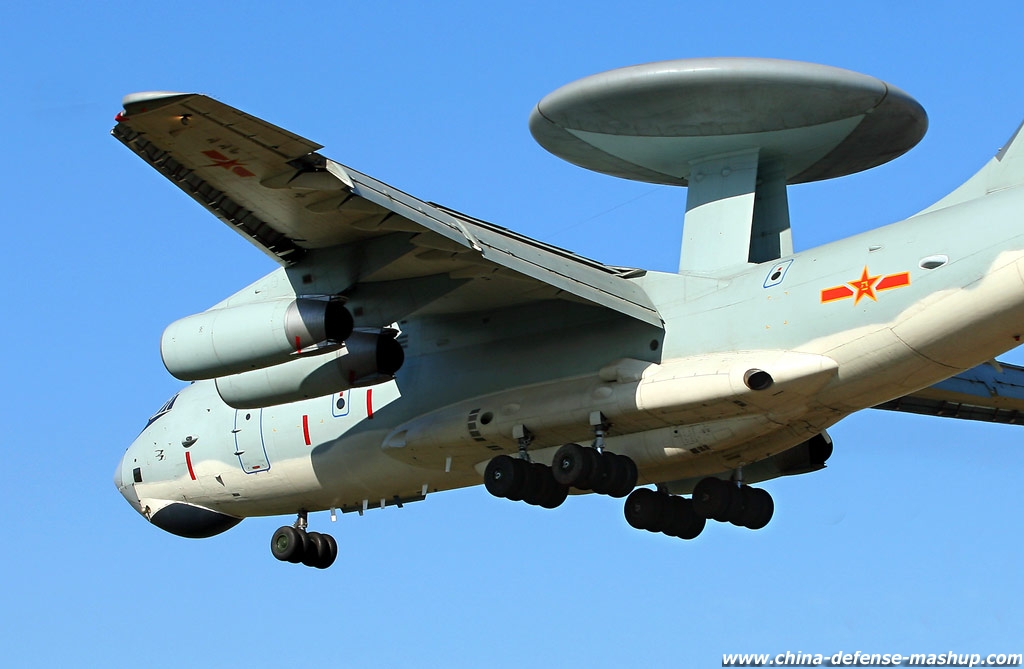
Reporter: What do we get from the cooperation with Israel?
Wang: 1. From Israel, China learned the T/R module and composite material radar dome production process specifications to control the quality.
2. Israel helped China to design radar structure basing on data bus network.
Reporter: When Israel canceled the project, did China have other choice?
Wang: Russia advised to jointly develop A-50 and even wanted to “lend” 4 A-50s to PLA Air Force before the joint development. Actually, Russian never believes China can produce indigenous AWE&C system.
When the “4.1″ mid-air collision between a United States Navy EP-3E and a PLA Navy J-8II interceptor fighter jet, China felt it had been in a hard international security situation. In normal condition, China would own AWE&C system in 10 years. And the military department could not wait for such a long time. So “AWE&C Made in China” did not acquire much supports.
But the top leader in Chinese government supports us. In 2002, the land testing sample aircraft was finished. In 2003, the prototype successfully finished its trial flight. In the last month of 2007, KJ-2000 entered service in PLA Air Force.
We spent only 5 years to manufacture China’s own AEW&C system.
Report: Did we meet other difficulties during the R & D?
Wang: 1: Electromagnetic compatibility design; 2: Software compatibility; 3: Battlefield Data Fusion via Datalink; 4: Scanning performance in mountain area; 5: We have no choices but IL-76 platform at that time. Russia don’t want sell China IL-76 after the birth of KJ-2000. But China develops some special AEW&C system, such as KJ-200, based on Y-8 aircraft.
Reporter: Please make an outlook of Chinese future AEW&C system
Wang: China has owned a complete and full family of AEW&C system. In future, AEW&C system made by Chinese will be very competitive in lower price. KJ-2000 costs billions of RMB and some new systems will only spend thousands or even millions of RMB.
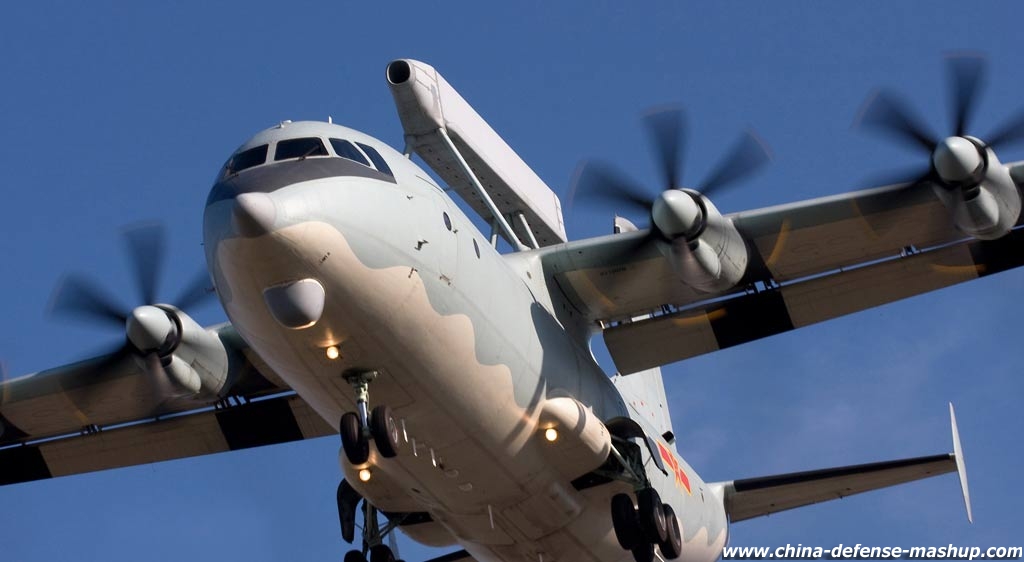
Being a large country, China in future will need more AEW&C systems. We can develop lots of variants or upgraded version from present systems.
Besides, our next object is Conformal Array Airborne Phased Radar, however, which exceeds today data processing technologies. We believe that China’s Radar technology is on the same level with foreign countries. Who make breakthrough in new concept radar or other detection methods, who will leading the world.
Mr. Wang Xiaomo, a radar expert, was born in 1938. He graduated from Beijing Industry Institute (now named Beijing Institute of Technology, BIT) in 1961. He is now the executive vice president of China Academy of Electronics and Information Technology, as well as a tutor of Ph.D. students at BIT and a member of China Engineering Academy.
In the past thirty years, Mr. Wang Xiaomo has been engaging in the research and design of radar. He has made great contributions to the development of the Chinese military electronic industry. He designed many new types of radar by using the state of the art technologies. He has high attainments in the aspect of Three-dimension Radar and Low-attitude Radar, he is the founder of these types of radar in China. The JY-8 and JY-9 radar, designed and developed under his leadership, filled the gaps in the fields of radar technique in China. These radars not only broke through the traditional mode of design, put forward the development and manufacturing of radar into a new era, but also shortened the distance to the advanced world technology.
Bolivia to buy 6 Chinese K-8 jets to battle drugs
Posted on 10 October 2009
October.11 (China Military News cited from Reuters) — Bolivia plans to buy six Chinese light military aircraft worth nearly $58 million to fight drug traffickers in the world’s No. 3 cocaine producer, leftist President Evo Morales said on Saturday.
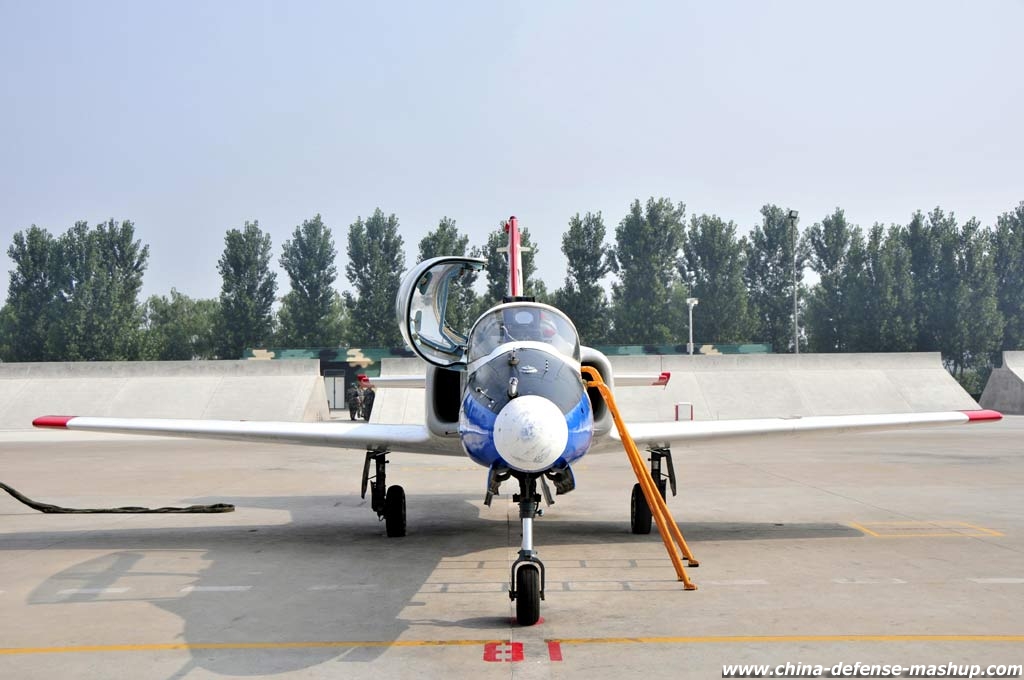
“Last week we issued a supreme decree to … acquire six K-8 aircraft from China,” said Morales in a speech in La Paz to mark the 52nd anniversary of the Bolivian air force.
Morales said his government decided to acquire the K-8, a jet trainer that can be used as a light attack aircraft, after the U.S. government blocked the country from buying similar planes from the Czech Republic.
Morales’ main regional ally, Venezuelan President Hugo Chavez, is also buying Chinese K-8 to be used to pursue cocaine flights. They replace a purchase of Brazilian Super Tucanos blocked by a U.S. arms embargo.
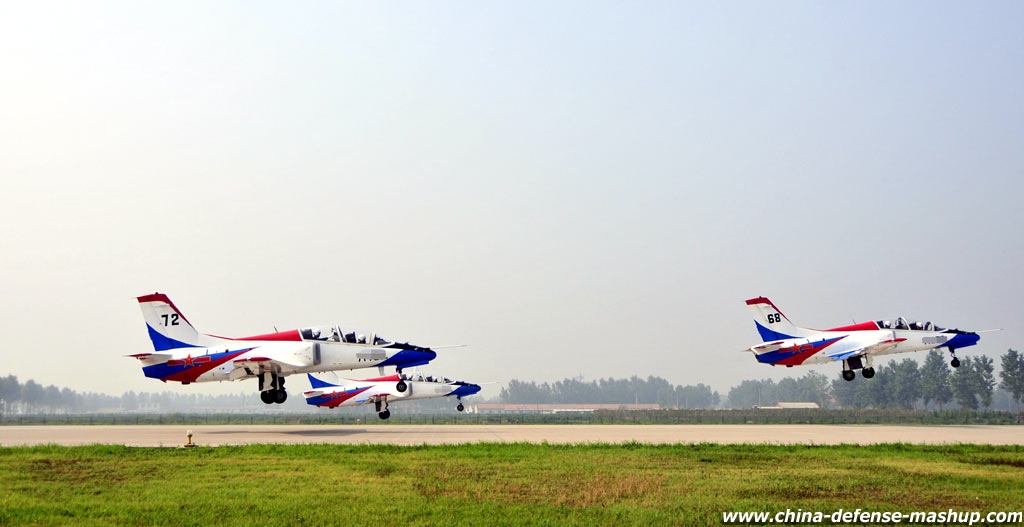
Bolivia, which is the third largest producer of the white powder drug after Colombia and Peru, has been at odds with Washington after Morales expelled the U.S. ambassador and anti-drug agents on charges of conspiring to overthrow him.
Since taking office in 2006 Morales, an Aymara Indian who once farmed coca, has forged ahead with controversial reforms to help the poor Indian majority in the Andean nation.
The coca leaf is the main ingredient for cocaine, but Indians in Bolivia and across the Andes use it in rituals and chew it for its medicinal and nutritional properties.
Morales also said Bolivia is negotiating the acquisition of an Antonov from Russia’s aircraft manufacturer Ilyushin, which will be used as presidential plane, and that the company is considering building an airplane repair hub in the country.
Last month, Morales unveiled a plan to buy a Chinese telecommunications satellite worth up to $300 million.
3 accused of selling weapons to Chinese military
Posted on 07 October 2009
October.08 (China Military News cited from Boston Herald and written by Thomas Grillo) — U.S. Federal prosecutors charged three employees of Chitron Electronics Inc., a Waltham unit of the China-based components distributor, with conspiracy to export weapons and parts to the Chinese military.
Chinese nationals Zhen Zhou Wu, Yufeng Wei, Bo Li and Chitron Electronics and Shenzhen Chitron Electronics Co Ltd. face a 38-count indictment for conspiring to violate the U.S. Arms Export Control Act for allegedly exporting defense weapons and electronics, money laundering and filing false documents with the U.S. Department of Commerce, accor-ding to acting U.S. Attorney Michael Loucks.
Wu, Wei and both firms were also charged with exporting electronic components to the Shanghai Academy of Spaceflight Technology, which “conducts research for the development and manufacture of tactical missiles, carrier rockets, space launch vehicles and satellites.”
Prosecutors also charge that Chitron exported the illegal weapons and electronic supplies to China without the required licenses from the State Department and Department of Commerce. The individual defendants each face a $1 million fine and up to 20 years in prison.
A message at Chitron’s Waltham headquarters, said the office would be closed through Oct. 7.

Chitron’s Web site
Chitron’s Web site says the 13-year-old company was founded by Wu, a Harvard graduate, and boasts being one of the largest independent distributors of electronic components in China, with 250 employees worldwide and sales in excess of $25 million last year.
China’s aviation giant buys Austrian plane parts maker FACC
Posted on 06 October 2009
October.06, 2009 - October 3, the stockholders of Austria’s leading aviation supplier FACC AG (”FACC”) and Xi’an Aircraft Industry (Group) Company Ltd. (”XAC”) have signed an agreement relating to the acquisition of the majority of shares in FACC by XAC. Upon completion of the acquisition, 91.25% of the shares of FACC AG will be held by XAC, 5% will remain in possession of the Austrian holding company ACC Kooperationen und Beteiligungen GmbH and 3.75% will be retained by Stephan Ges.m.b.H. The transaction which is subject to customary regulatory approvals is expected to be finalized by the end of the fourth quarter of 2009. After the completion of the acquisition, a share capital increase will be carried out, raising shareholders’ equity from the current 40 million Euros up to no less than 80 million Euros. This primary equity capital raising will assure the planned business development of FACC.
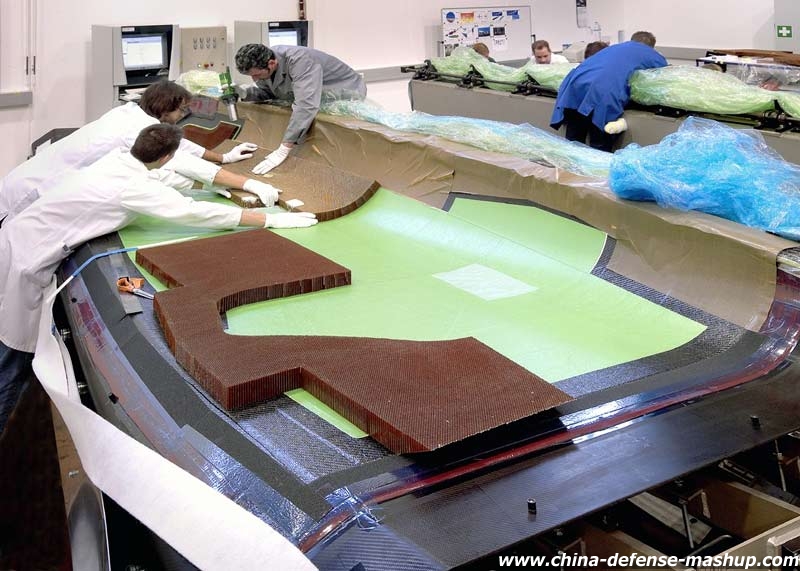
FACC will bring its advanced composite aerostructure manufacture ability to XAC
FACC is a leading company specializing in the development, design and manufacture of composite components and systems for civil aircraft. We offer a wide range of products, from aircraft fairings to fuselages and wings, engine and engine nacelle components and complete aircraft cabins. The two divisions Structures and Interiors occupy top positions in their respective markets.
In 2008, The Chinese aircraft manufacturer COMAC/ AVIC Commercial Aircraft Co., Ltd. awards FACC the “Silver Medal Supplier Award” for the development and manufacture of the ARJ21 passenger cabin.
XAC is the main contractor of famous JH-7/JH-7A two-seater, twin-engine fighter-bomber in service with the People’s Liberation Army Naval Air Force (PLANAF), and the People’s Liberation Army Air Force (PLAAF).
China provides F-8T fighter for foreign users in 13th Aviation Expo in Beijing
Posted on 23 September 2009
September.23 (China Defense Mashup Reporting by Johnathan Weng) — Today the 13th Aviation Expo is held in China International Exhibition Center, Beijing. AVIC provides a new version member of J-8 family to foreign users. At this time it is not J-8IIM but F-8T from SAC.
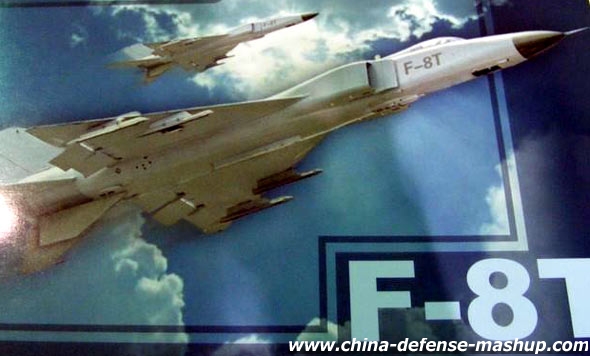
F-8T fighter is designed by Shenyang Aircraft Design and Research Institute and manufactured by SAC (Shenyang Aircraft Corporation). F-8T is capable of interception, combat and air-to-surface attack performing day and night as well as in complex climate conditions.
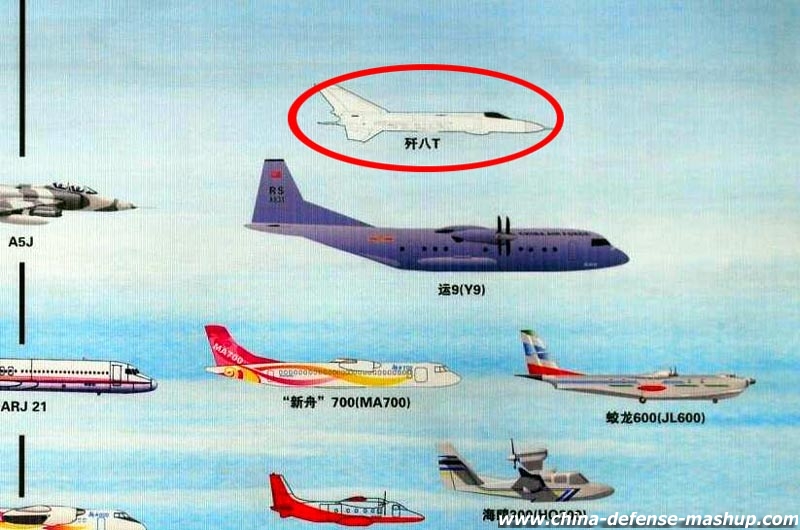
red circle marks the J-8T
F-8T Fighter is equipped with advanced multi-functionalX-band full-wave airborne pulse dopplar radar, which can provide accurate targeting and tracking on multiple air targets. The air-to-air object (radar cross section=3 square meter) detection range is greater than 75km for upward view, and greater than 45km for downward view. The air-to-sea object (radar cross section=50 square meter) detection range is greater than 100km for radar sea operating mode-1; and greater than 80km for radar sea operating mode-2. The tracking range for single target is no less than 80% of the detection range. The radar’s search-while-tracking function is capable of simultaneous search and tracking of no less than 10 targets, working together with fire control system on multi-target attack. The radar can guide various types of missiles and other precisely-guided-weapons. The design of the radar meets the requirements for further battlefield environment.
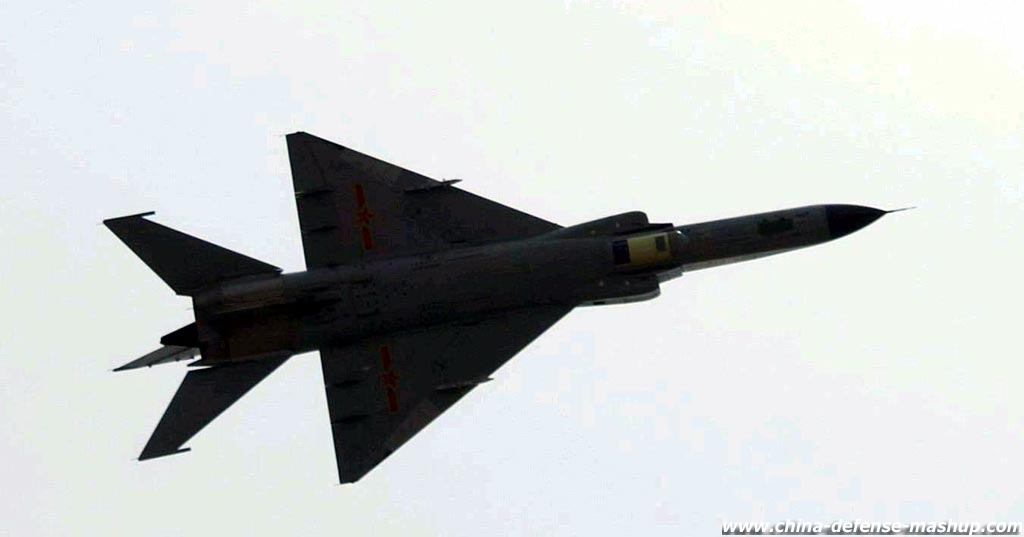
The radar, compatible to friend-or-foe inquiry responder, is capable of friend-or-foe identification during air-to-air and air-to-surface search and tracking. It guides various types of missiles and other smart weapons, including heat-seeking dogfight air-to-air missile, medium range air-to-air interception missile, anti-ship missile and laser-guided bomb.
The design of “One head-up two head-down displays” is adopted in the in the cockpit configuration, namely an integrated display solution employing one head-up display and two multi-functional displays as the primary displays with mechanic bellows instrument as the backup, providing the pilot with various flight and combat information. It guarantees to accomplish the combat missions with twin-stick operation under head-up display condition. The cockpit design integrating human-aircraft-environment provides wider view and piloting comfortability.

F-8T Fighter is equipped with two WP13BII (FWP14A) Turbojet Engines to provide strong power with a thrust-weight ration of 0.94, ensuring the immediate operation and high maneuverability in air combat.
specifications of F-8T fighter:
Length: 21.3m
Wing span: 9.3m
Height: 5.4m
Empty Weight: 10371kg
Normal Takeoff Weight: 15200kg
Max Takeoff Weight: 19980kg
Max Speed: 2.2 mach
Normal Fuel Volume: 4200kg
Static Thrust: 2X68.67 KN
Ceiling: 18000m
Rate of Climb: (H=1km, M=0.9) 220m/s
(H=5km, M=0.9) 160m/s
Overload at steady turn: (H=1km, M=0.9) 6.9g
(H=5km, M=0.9) 4.7g
Time of Level Acceleration: (H=1km, M=0.7-1.0) 21s
(H=5km, M=0.6-1.25) 55s
Max Range: 2150km
Combat Radius: 900km
Lift-off Speed: 330km/h
Takeoff Running Distance: 590m
Landing Speed: 275km/h
Landing Running Distance: 860m
Others: 2 WP13BII (FWP14A) Turbojet Engine
2 15 KVA AC Generators
Electronic Warfare System
Aircraft automatic-pilot system, providing pullup and stability augmentation
In-flight refueling system
China plans to establish “Skunk works” team in its Aviation Industries
Posted on 23 September 2009
September.23 (China Defense Mashup Reporting by Johnathan Weng) – Since the public listing on March 26 in Beijing this year, the Defense Division of AVIC Group has become the focus of defense market. At the beginning of September, Mr. Wang Ya-wei, the general manager of AVIC Defense Division says the company has advanced in substantiation and is going to establish China’s “skunk works” in future.
Wang Ya-wei says the company will set up some R & D centers in specialized areas in accordance with the group’s plan. In future’s new product development, AVIC Defense Division will change the previous pattern and re-design the layout under the distinguished features of company’s plants or research institute. Wang says that AVIC Defense Division will accelerate new product development efficiency and import the idea of U.S.’ “skunk team” to build up a center for speeding new aircraft development.
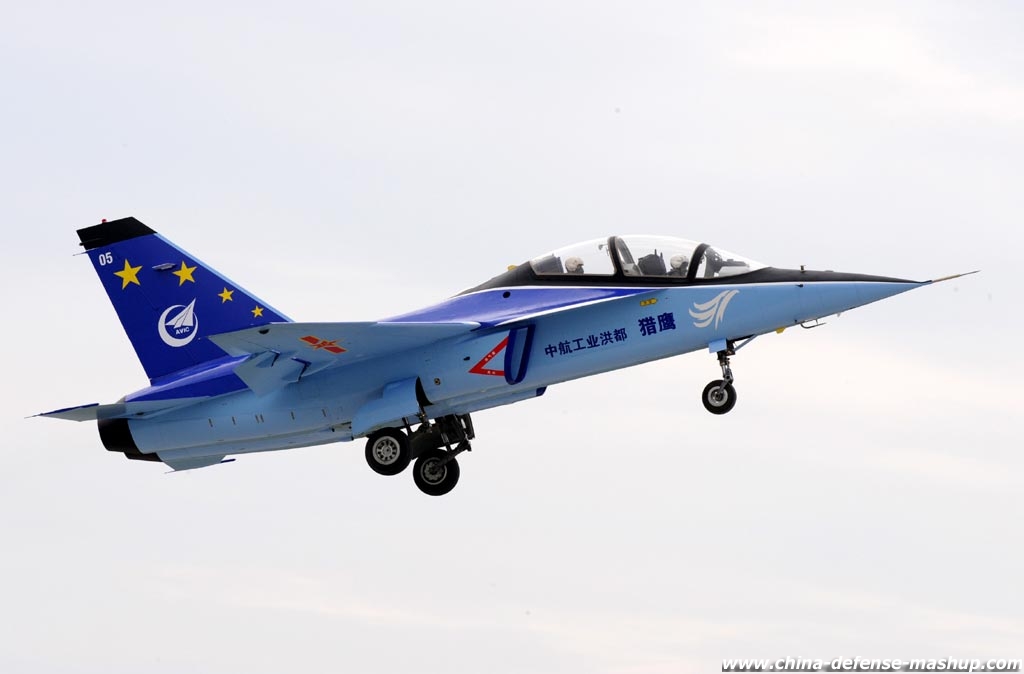
L-15 Jet Trainer
In the air-war weaponry, the AVIC Defense Division has abandoned the ignorance of air warfare tactics research and started to focus on battlefield environment and combat models research. AVIC Defense Division has invited a great number of civilian or military experts to study the air-combat environment and concepts under the context of Military Revolution and Transformation. The company also makes seminars for deeper discussion of future military aviation equipment system and further designs the mid-term and outlook plan of company development.

J-10B fighter
Wang Ya-Wei stressed that the AVIC Defense Division will continue to focus on improvement of active-duty fighters, to accelerate the development of next generation fighter. AVIC Defense Division will fully push the development and market exploration of L-15 jet trainer to realize the products line of high-end and low-end collocation.
Wang says that the AVIC Defense Division will fully promote the research of UAV, especially highlighting advanced drones. He also promises that the company will successfully make breakthrough in air-war missile system to provide cutting-edge weapons for Chinese Air Force and Naval Aviation Troops.

J-11 Fighter, not a simple copy of Su-27
In the field of civil aviation, the AVIC Defense Division will actively participate in the development of China’s largest commercial airline jet plane C919 and continue to promote the Bombardier C Series project. In the non-aviation products for civilian use development, the AVIC Defense Division will focus on the development of lithium-powered batteries and other new energy industry, expand the share of the automobile industry supporting, develop diesel EFI, electric cars, maglev trains and other key products for civilian use.
Wang Ya-Wei concluded that, according to defense planning to the development of branch in 2017 total output value will be at 160 billion, of which military revenues will account for about 70% of total revenue.

Some PLA Officers inspecting the development of Chinese Air Force Heavy Lifter (left below corner)
Skunk Works is an official alias for Lockheed Martin’s Advanced Development Programs (ADP), formerly called Lockheed Advanced Development Projects. Skunk Works is responsible for a number of famous aircraft designs, including the U-2, the SR-71, the F-117, and the F-22. Its largest current project is the F-35 Lightning II, which will be used in the air forces of several countries around the world.
If you need any more details of the above news and/or products, please visit Chinatungsten Online, or contact us directly.
Disclaimer: The article is only reflecting the opinions of the author. We have no responsibility to prove the originality and authenticity of the content, words and/or pictures. You readers should just take it as reference and check the details by yourselves. And the content is not a suggestion for investment decision. The investor takes his or her own risks if he or she operates accordingly. If you have any dissent about the contents above, please contact the relevant author, or the webmaster. We will try our best to assist the dealing of the related issues. Thanks for your visit and cooperation.
|

























